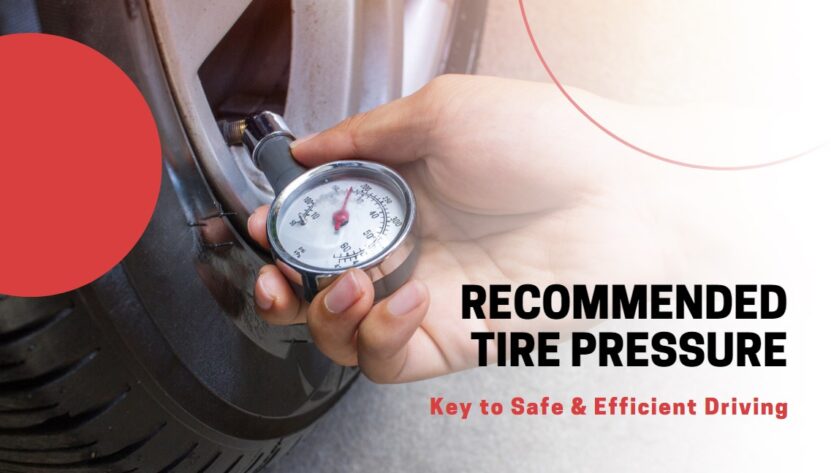When it comes to vehicle maintenance, tire pressure is a crucial factor that can significantly impact the performance and safety of your car. When you set everything up correctly, you can improve fuel efficiency, extend tire life, and prevent accidents caused by tire blowouts or loss of control. In this article, we will discuss the recommended tire pressure for your vehicle and how to ensure that your tires are properly inflated.
Why Is This Important?
It is crucial to regularly check your tire pressure to ensure your vehicle is running at peak performance and to avoid potential safety hazards. Properly inflated tires can help improve gas mileage, handling, and overall performance. On the other hand, underinflated or overinflated tires can cause a variety of problems that can negatively affect your driving experience.
One of the main reasons why it’s important to check pressure is to ensure your tires are wearing evenly. When they are underinflated, the edges of the tread will wear out faster than the center. Conversely, when they are overinflated, the center of the tread will wear out faster than the edges. Uneven tire wear can decrease their lifespan, leading to costly replacements. By maintaining proper tire pressure, you can ensure they wear evenly and last longer.
In addition to improving tire life, maintaining proper pressure can also improve gas mileage. When your tires are underinflated, they create more resistance against the road, causing your vehicle’s engine to work harder and use more fuel. By keeping your tires properly inflated, you can reduce the amount of fuel your vehicle consumes and save money at the gas pump. Checking your tire pressure regularly is a simple and easy way to improve your vehicle’s fuel efficiency and save money on gas.
What Is the Recommended Pressure for My Vehicle?
The recommended tire pressure for your vehicle can be found in your owner’s manual, on the tire placard located on the driver’s side door jamb, or on the tire itself. It is important to follow the manufacturer’s recommendations as they are based on extensive testing and research to ensure the best performance and safety of your vehicle.
The recommended pressure can vary depending on the make and model of your vehicle, as well as the type of tires that you have installed. Generally, passenger cars and light trucks have a recommended pressure range between 30-35 PSI (pounds per square inch). However, some vehicles may require higher or lower pressure depending on their weight, load capacity, and driving conditions.
How to Check Your Pressure
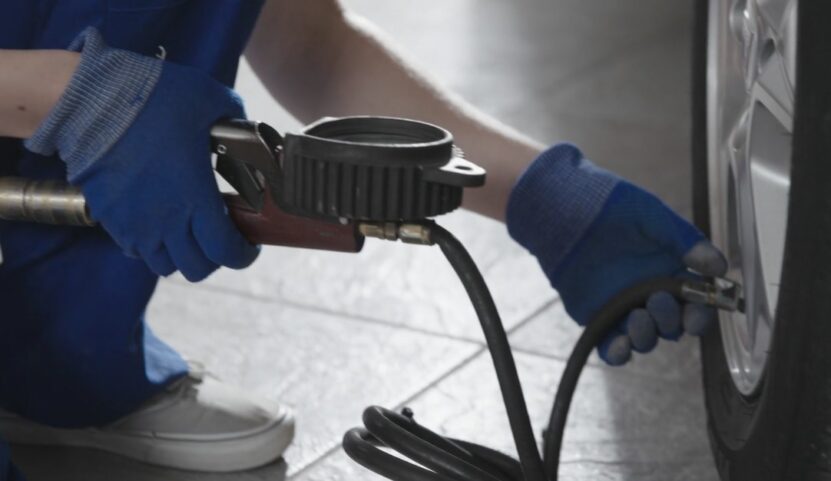
To ensure that your tires are properly inflated, you should check the pressure at least once a month or before long trips. You can use the pressure gauge to measure the pressure and compare it to the recommended value. Here are the steps to check your tire pressure:
- Remove the valve cap from the tire valve stem.
- Press the pressure gauge onto the valve stem until you hear a hiss of air.
- Read the pressure gauge and compare it to the recommended pressure.
- If the pressure is too low, use an air compressor or tire inflator to add air until it reaches the recommended value.
- If the pressure is too high, release some air by pressing the center pin in the valve stem until it reaches the recommended value.
- Replace the valve cap and repeat the process for all four tires.
- It is important to check your pressure when the tires are cold, as driving can heat them up and increase the pressure. Also, make sure that your tire pressure gauge is accurate and calibrated regularly.
What Happens if You Inflate Your Tires to the Max PSI?
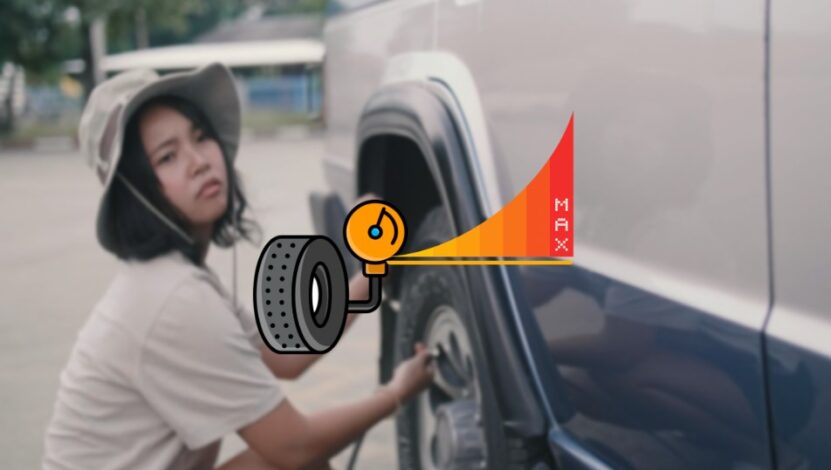
Inflating your tires to the maximum PSI (pounds per square inch) listed on the tire sidewall can be very dangerous. The maximum PSI is not the same as the recommended pressure for your vehicle, and it’s important to never exceed it. Overinflating your tires can cause a variety of problems, including decreased handling, uneven wear, and increased risk of blowouts.
When they are overinflated, they will have a smaller contact patch with the road, which can decrease traction and handling. This can make it more difficult to steer and control your vehicle, especially in wet or slippery conditions. Overinflation also tends to wear out more quickly and unevenly, which can lead to expensive tire replacements.
Perhaps the most dangerous consequence of overinflating is the increased risk of a tire blowout. When it is overinflated, the air pressure inside puts too much stress on the tire walls, causing them to weaken and eventually fail.
A blowout can happen suddenly and without warning, causing you to lose control of your vehicle and potentially leading to a serious accident. To avoid these dangers, always make sure to inflate your tires to the recommended pressure for your vehicle and never exceed the maximum PSI listed on the tire sidewall.
In What Way Does the Temperature Affect?
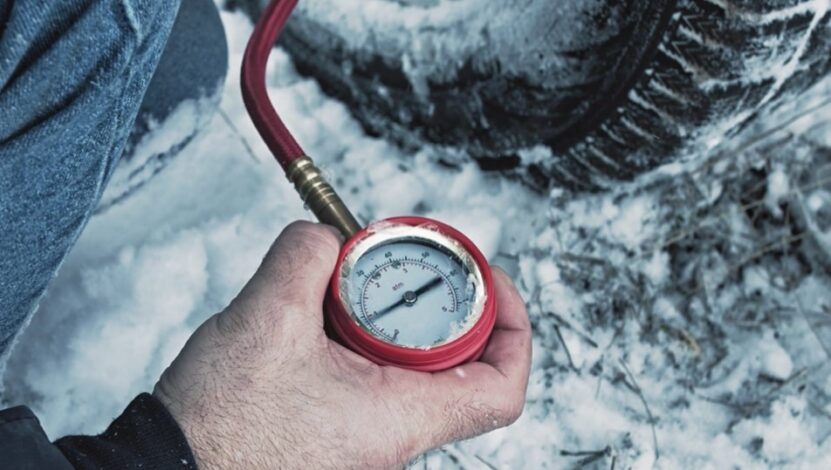
The temperature has a significant impact on tire pressure, as changes in temperature can cause the air inside to expand or contract. As a general rule, for every 10°F change in temperature, your tire pressure can change by approximately 1 PSI.
This means that during colder months, when the temperature drops, the pressure can decrease, and during hotter months, when the temperature rises, your tire pressure can increase.
When your tire pressure is affected by temperature changes, it can impact your vehicle’s handling and performance. Underinflation can lead to decreased fuel efficiency and poor handling, while over-inflation can cause a rougher ride and increase the risk of a blowout. Additionally, if your tires are overinflated during hot weather, the increased pressure can cause them to wear out faster in the center of the tread, leading to decreased lifespan.
To ensure your tire pressure stays within the manufacturer’s recommended range, it’s important to check the pressure regularly, especially during significant temperature changes. If you notice that the pressure is too low or too high, adjust it accordingly to ensure your tires are properly inflated. By maintaining proper tire pressure, you can improve your vehicle’s handling, performance, and fuel efficiency while also extending the life of your tires.
Frequently Asked Questions
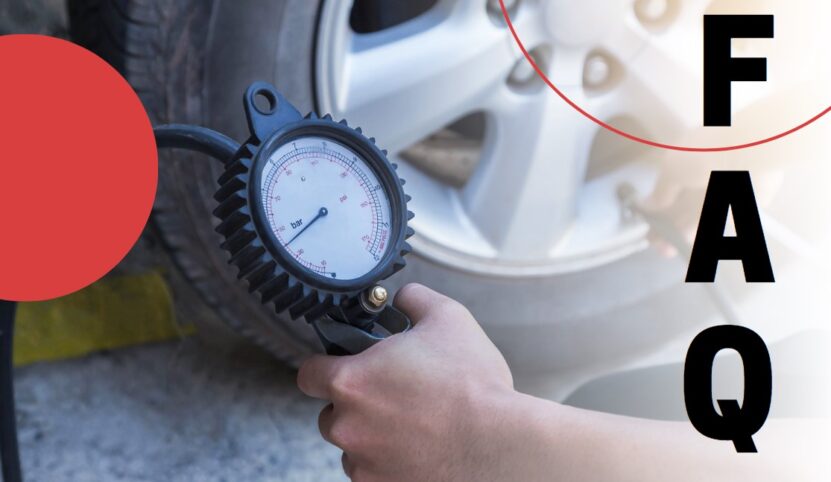
1. What happens if my tires are underinflated?
Underinflated tires can cause poor handling, decreased fuel efficiency, and excessive wear on the tire’s sidewalls. This can lead to a higher risk of blowouts and accidents.
This can happen due to a variety of reasons, such as slow leaks, temperature changes, or neglecting regular tire maintenance. Regardless of the cause, driving on underinflated tires can have several negative consequences.
It’s important to maintain the proper air pressure in your vehicle’s tires to ensure safe, efficient, and comfortable driving. Be sure to check your tire pressure regularly and inflate your tires to the manufacturer’s recommended pressure level.
2. How often should I check the pressure?
It’s recommended that you check the pressure at least once a month and before any long road trips. You should also check your tire pressure after any significant changes in temperature or altitude.
If you live in an area with extreme temperature changes, such as in areas with harsh winters or summers, it’s important to check your tire pressure more frequently. This is because temperature fluctuations can cause your tire pressure to change rapidly, which can lead to underinflated or overinflated tires.
It’s also important to note that different vehicles may require different tire pressure levels, so it’s important to refer to your vehicle’s owner’s manual or tire placard for the recommended pressure level.
3. What is the recommended tire pressure for my vehicle?
The recommended pressure for your vehicle can usually be found in your owner’s manual or on a sticker located on the driver’s side doorjamb. You can also check the manufacturer’s website or consult with a trusted mechanic.
The tire placard is usually located on the driver’s side door jamb or inside the glove compartment. It contains important information about your vehicle’s tire size, load capacity, and recommended levels. The recommended tire pressure levels are usually listed in pounds per square inch (PSI) and can vary depending on whether your vehicle is fully loaded or empty.
It’s important to note that the recommended tire pressure levels are not the maximum tire pressure levels. Overinflating your tires can be just as dangerous as underinflating them, as it can cause your tires to wear down faster, reduce your vehicle’s handling ability, and increase your risk of a blowout.
You should consider the type of your tires too, check out this video for more information:
4. Can I use the pressure listed on my tire’s sidewall?
While the pressure listed on your tire’s sidewall can be useful information, it’s not recommended to use it as the definitive guide for inflating your tires. The pressure listed on the tire sidewall is the maximum pressure and not the recommended pressure.
The recommended pressure for your specific vehicle is typically lower than the maximum one listed on the sidewall, as it takes into account the weight of your vehicle and other factors that can affect it.
5. Can I use the same pressure for all four tires?
Yes, it’s recommended to use the same pressure for all four tires, as uneven inflation can cause handling and safety issues.
6. What should I do if I notice that the pressure is low?
iving on underinflated tires can cause several negative consequences, including reduced handling ability, decreased fuel efficiency, and increased wear and tear on your tires.
To address low tire pressure, you can follow these steps:
- Check the tire pressure: Use a tire pressure gauge to check the pressure levels in each tire. Compare the reading with the recommended pressure levels listed in your vehicle’s owner’s manual or tire placard.
- Inflate the tires: If the pressure is low, inflate the tires to the recommended pressure levels. You can use an air compressor at a gas station, a portable air compressor, or a manual pump to inflate your tires. Be sure to check the pressure again after inflating the tires to ensure that they are properly inflated.
- Check for leaks: If you notice that it is consistently low or decreasing rapidly, there may be a leak in the tire. You can check for leaks by visually inspecting the tire for any punctures, cuts, or damage. Alternatively, you can use a tire pressure gauge with a built-in leak detector to check for leaks.
- Repair or replace the tire: If you find a leak in the tire, you may need to repair or replace the tire. If the leak is small and located on the tread area, it may be possible to repair the tire using a tire repair kit. However, if the leak is larger or located on the sidewall, you may need to replace the tire.
By taking action to address low tire pressure, you can help ensure safe and efficient driving while prolonging the life of your tires.
Final Words
In conclusion, maintaining the correct tire pressure is crucial for safe driving, vehicle performance, and tire longevity. It’s important to check the pressure regularly and ensure it is within the manufacturer’s recommended range.
By following the recommended pressure guidelines and adjusting your tire pressure when necessary, you can improve your vehicle’s handling and performance while also extending the tire’s longevity. Remember, safety on the road starts with proper maintenance.
We recently published an article about when is buying a used car engine the right choice, so make sure to check it out, as there are some interesting takes on the subject.

